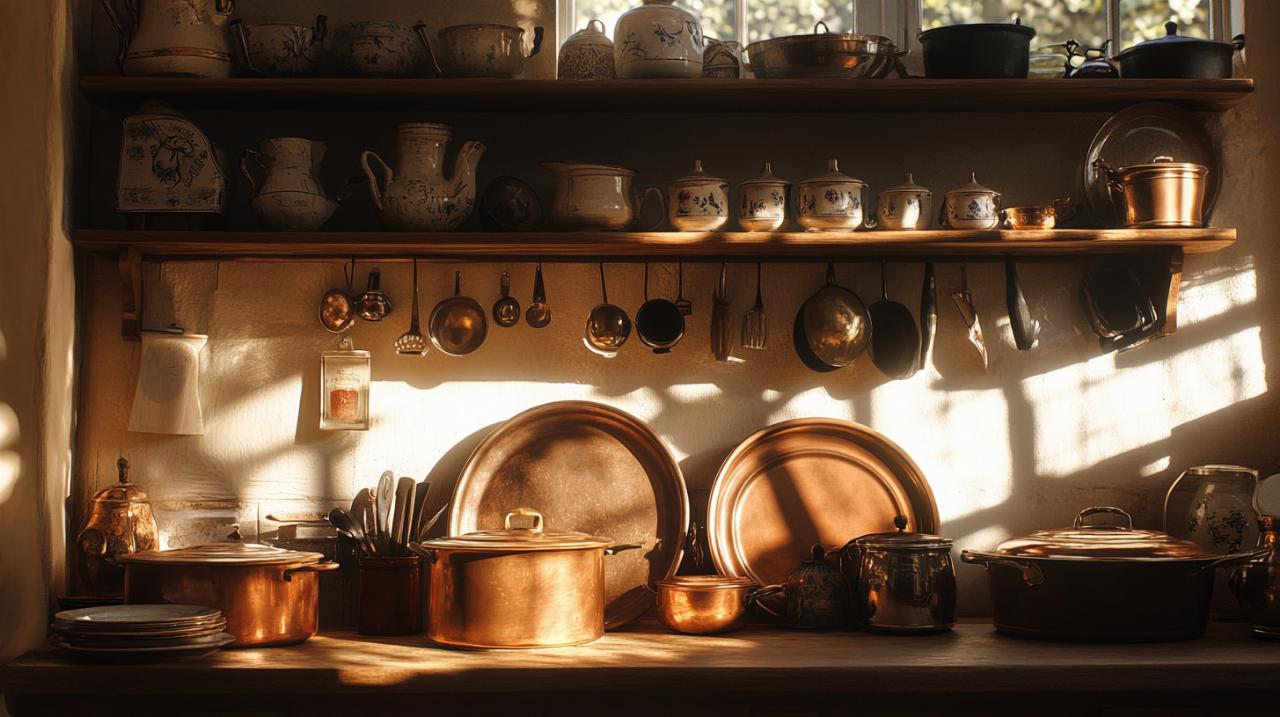Every household holds hidden stories tucked away in forgotten corners, and many of these stories come with items that carry both sentimental and financial weight. From dusty lofts crammed with decades of memories to the backs of cupboards where treasured pieces have quietly waited, the journey to uncover what might genuinely be valuable is both thrilling and enlightening. Whether you are sorting through an inheritance or simply curious about the odds and ends scattered around your home, learning to identify valuable family heirlooms can open up a world of unexpected discoveries and meaningful connections to the past.
Where to Begin Your Search for Hidden Treasures
Exploring forgotten spaces: lofts, cupboards, and storage areas
The first step in unearthing potential family treasures is to have a good rummage through your loft, cupboards, and other storage areas. These spaces often become repositories for items that were once cherished but have since been forgotten or overlooked. Lofts and attics are particularly promising, as they tend to hold items passed down through generations, from old toys and vintage clothing to antique furniture and rare books. Garages and spare rooms, too, can yield surprising finds if you take the time to sift through boxes and dusty corners. The key is to approach this task with patience and an open mind, as even the most unassuming objects can turn out to be collectable items of significant worth.
As you explore these forgotten spaces, keep an eye out for anything that looks historically important or beautifully crafted. Items over a century old are considered proper antiques, and pieces from specific periods such as the Victorian era or Art Deco can be especially valuable. Vintage wooden furniture with distinctive maker’s marks, antique musical instruments crafted by known makers, and old books with fancy bindings or first edition status are all worth a closer look. Even items that seem mundane at first glance, such as old sewing machines, vintage stereos, or pre-1970s comics, can be highly sought after by collectors. The process of searching through your home is not just about finding monetary value but also about reconnecting with the stories and craftsmanship of the past.
Recognising Items with Historical and Craftsmanship Significance
Once you have begun your search, it is essential to identify valuable family heirlooms by recognising items that stand out for their historical importance, quality of craftsmanship, or unique design. Mid-twentieth century furniture, for example, has been making a comeback, with pieces from this era appreciated for their distinctive style and solid construction. Designer watches from prestigious brands like Rolex, Breitling, and Omega can be worth a pretty penny, particularly if they come with their original boxes and service history. Vintage clothing, especially from designers like Mary Quant, Dior, or early Vivienne Westwood, is desirable not only for its sustainability and uniqueness but also for its connection to fashion history.
When examining items, consider their condition carefully. Wear and tear, such as moth damage on textiles or scratches on furniture, can significantly affect value. Old toys in good nick, like Barbies, Matchbox cars, or Pokemon cards, are sought after by collectors, but their condition is paramount. Similarly, artwork such as old oil paintings, sterling silver flatware marked with hallmarks like ‘925’ or ‘sterling’, and vintage glassware from companies like Fostoria or Cambridge can all be hidden treasures if they have been well preserved. Even seemingly ordinary items, such as light fixtures that can be restored or Blue Danube dishes made in 1950s Japan, can surprise you with their worth. The importance of recognising these details cannot be overstated, as they form the foundation of understanding what you might have tucked away in your home.
Understanding marks, signatures, and provenance
Deciphering Hallmarks and Maker’s Marks on Your Heirlooms
Once you have identified items that catch your eye, the next step is to do a bit of detective work on any hallmarks, signatures, or maker’s marks present on the objects. These marks are vital clues that can reveal the origins, age, and authenticity of your heirlooms. Silver items, for instance, often carry hallmarks that indicate the quality of the metal, the maker, and the year of production. Look for markings such as ‘925’ or ‘sterling’ on silver flatware, jewellery, or home decor, as these denote genuine sterling silver and can significantly increase an item’s value. Items from renowned firms like Tiffany & Co. are especially highly sought after and command premium prices.
For furniture and other larger pieces, maker’s marks can often be found on the underside or back of the item. These marks help you trace the piece back to its original craftsman or manufacturer, which is particularly important for antique furniture from specific periods or makers. Vintage wooden furniture with distinctive marks and evidence of skilled construction can be quite valuable, especially if it originates from celebrated workshops. Similarly, antique musical instruments made by known makers carry marks that verify their authenticity and craftsmanship. Taking the time to research these marks using online resources, specialist books, or tools like Google Lens can provide you with a clearer picture of what you own and its potential worth.
Researching the Origins and Historical Context of Your Finds
Understanding the history and context behind your items is just as important as deciphering their marks. Provenance, which refers to the documented history and previous ownership of an item, can significantly increase its value. Original boxes, service histories, photographs, and any accompanying documentation all contribute to building a compelling provenance. This is especially true for medals, where stories, photos, and uniforms can add considerable value to the piece. Even items like old concert tickets from famous bands and festivals such as Woodstock or vintage TV guides and magazines predating 1970 can be worth money if their history is well documented.
Researching the origins of your heirlooms involves delving into family records, old letters, and photographs that might shed light on who owned the items and how they came into your family. For instance, a Rolex watch with full provenance has been known to sell for just under thirty thousand pounds, demonstrating the powerful impact that a well-documented history can have on an item’s market value. Similarly, heirlooms such as bone china collections acquired in Japan before World War II, Victorian charm bracelets, or antique jewellery with a clear lineage all benefit from a rich backstory. Taking the time to piece together the historical context of your finds not only enhances their financial worth but also deepens your connection to your family’s past.
Getting professional valuations and authentication
Choosing a Trusted Expert for Accurate Appraisals
While your own research is invaluable, getting a professional valuation from a trusted expert is essential before making any decisions about selling or insuring your heirlooms. Antiques experts, appraisers, and auction house specialists have the knowledge and experience to provide accurate assessments of your items. It is worth getting a professional appraisal for anything, as even seemingly worthless items can turn out to be valuable. Experts recommend consulting antiques dealers or auction houses, as they can offer insights into current market trends and help you understand the true worth of your possessions.
When choosing an expert, look for someone with a solid reputation and relevant experience in the specific category of your heirloom. For example, if you have vintage jewellery or designer watches, seek out specialists who focus on those areas. Similarly, if you have antique furniture or rare books, find an appraiser who has a proven track record with such items. Many auction houses offer free initial consultations, which can be a good starting point. Local antique shops can also provide faster valuations, and advertising your items online is another option if you prefer to reach a broader audience. However, be mindful of the commission structures that auction houses and dealers use, as these can affect the final amount you receive.

Verifying authenticity and determining market value
One of the most critical aspects of professional appraisal is verifying the authenticity of your items. Fakes are common, especially with high-value items like designer watches and handbags. For instance, genuine Hermès scarves have hand-rolled edges, and attention to such details is crucial when assessing authenticity. Counterfeit detection requires a trained eye, and experts can spot subtle differences that might escape the untrained observer. If you have any doubts about an item, it is always better to get it authenticated by an auction house or antiques dealer rather than risk selling a fake or, conversely, undervaluing a genuine piece.
Once authenticity is confirmed, determining the market value involves considering several factors, including condition, rarity, provenance, and current demand. The condition of an item matters a great deal, as something in good nick will be worth more than a similar piece with significant wear and tear. Rare items, such as first edition books or signed copies, can command high prices, while collectable items like old coins with errors can be very valuable. Market trends also play a role, with certain periods and styles experiencing resurgence in popularity. Mid-century furniture, for example, has seen renewed interest, while vintage clothing is prized for its sustainability and uniqueness. By working with a professional, you can gain a comprehensive understanding of what your heirlooms are worth and make informed decisions about their future.
The Importance of Provenance and Family History
How previous ownership can increase an item’s worth
Provenance is not just a matter of paperwork; it is a narrative that brings an item to life and can substantially increase its worth. The documented history of who owned an item and how it was used adds layers of meaning and authenticity that collectors and buyers value highly. For example, medals with accompanying stories, photographs, and uniforms are far more valuable than those without any context. Similarly, items with a connection to significant historical events or notable individuals can command premium prices. A table crafted by Richard Falkinham, who also made coffins, or a whisky flask belonging to a coal miner from Scotland who migrated to the United States in 1851, both carry stories that enhance their appeal and value.
Family heirlooms often come with rich histories that span generations, and documenting these stories is crucial for preserving their significance. Items such as a bone china collection acquired in Japan before World War II, a Victorian charm bracelet, or a heart necklace and wedding ring from a grandmother all gain value when their provenance is carefully recorded. Even objects like a locket hand-painted by a great-aunt, containing photos of her father and grandfather, or a baby bath from the 1940s and 1950s now used as a garden feature, are treasures whose worth is amplified by their backstory. By taking the time to document the history of your heirlooms, you not only increase their market value but also maintain a vital connection to your family’s past.
Documenting the story behind your family heirlooms
Capturing the stories behind your heirlooms is an essential practice, whether you decide to keep, sell, or pass them on. Family memorabilia, such as photos, letters, furniture, and jewellery, are items with sentimental value passed down through generations, and their significance often weakens with each successive generation if the stories are not preserved. Recording the history of your heirlooms involves gathering old letters, photographs, and oral histories from family members who remember the items and their original owners. This documentation not only enriches the narrative of each piece but also ensures that future generations understand the context and importance of what they inherit.
For instance, a family Bible that belonged to James Thomas of County Durham, which travelled from England to South Africa and is now in the United States, is a powerful testament to family migration and resilience. Similarly, a quilt made by a great-grandmother, a stained glass window replica created by Marc Chagall, or opera glasses from a two-times great uncle all carry stories that deserve to be told and preserved. Even items like a cake topper used in over forty family weddings or a crocheted table centre made by a great-grandmother become more meaningful when their stories are shared. Documenting these narratives can be done through written records, photographs, or even digital formats such as PDF books detailing your heirlooms. By preserving the stories, you ensure that the emotional and historical value of your family treasures endures, regardless of their financial worth.
Balancing sentimental value with financial worth
Weighing up family significance before selling
When it comes to deciding the fate of your heirlooms, it is crucial to weigh up the family significance of each item before making any decisions about selling. The emotional value of an heirloom often far exceeds its monetary worth, and parting with an item that holds deep sentimental meaning can be a decision you later regret. Family memorabilia are treasures not because of their market price but because of the memories and connections they represent. Items that bring up happy memories, serve a practical purpose in your daily life, or have the potential to be passed on to another family member who would treasure them are worth holding onto.
Attachment to these items can weaken with each generation, but that does not diminish their importance in the present. For example, a 1913 Roberts Lightning Mixer used to make whipped cream is not just a kitchen gadget; it is a link to the past and a functional piece of family history. Similarly, a rocking chair made by an uncle over a century ago and brought to Canada, or a jacket that belonged to a grandmother and was likely made in Lebanon, are items that carry irreplaceable emotional weight. Before deciding to sell, consider whether the item has emotional value, serves a practical purpose, takes up valuable space, or has the potential to be treasured by another family member. These considerations will help you make a decision that honours both the past and the future.
Making Informed Decisions About Keeping or Parting with Heirlooms
Making informed decisions about your heirlooms involves balancing the sentimental value with the financial worth and practical considerations of space and use. Decluttering can be difficult when every item seems to carry a memory or a story, but it is important to be realistic about what you can keep and what might be better off finding a new home. If an item is taking up valuable space and is not being used or appreciated, it may be time to let it go, especially if it could be sold to someone who will value it or passed on to a family member who would treasure it more.
However, before parting with any heirloom, do your homework and get a professional opinion to avoid future regrets. The value of heirlooms is often sentimental rather than financial, but understanding both aspects will help you make a choice that you are comfortable with. Local antique shops offer a faster way to sell, and auction houses can help you reach a wider audience, though they will take a commission. Online marketplaces also provide opportunities to advertise your items, but always ensure you have a clear understanding of their value before listing them. Capturing the stories behind your heirlooms, even if you decide to part with them, ensures that the memories and history are preserved. By carefully considering the emotional attachment, practical purpose, and potential to pass on each item, you can make decisions that respect your family’s legacy while meeting your current needs.





